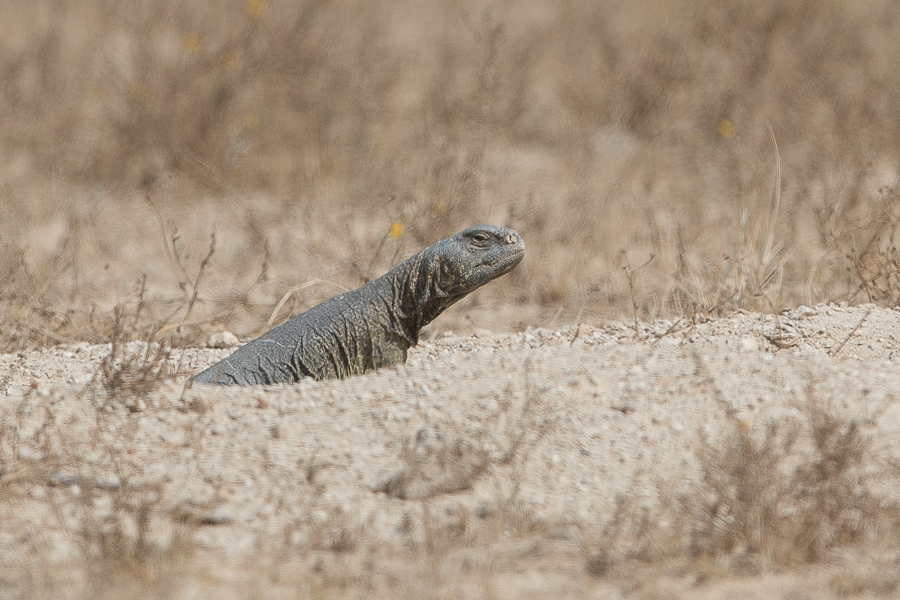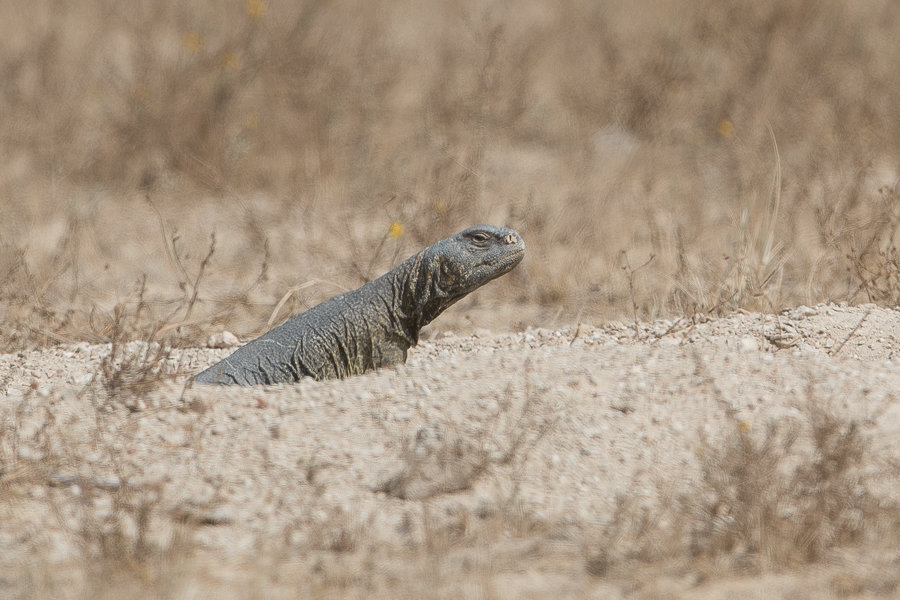A few days ago I was walking around the flat stoney desert area near Jebal Hamrah when I came across an Arabian Spiny-tailed Lizard sunning itself by its hole. It was still quite cool as it was a blue colour.Theybecome yellow when they have heated up. These lizards are relatively common and widespread across Saudi Arabia preferring hard stony ground to excavate their holes. Spiny-tailed Lizard (Uromastyx spp.) is a medium to large sized, heavily built lizard with a spiny club like tail, which has been likened to a small living dinosaur.
They are ground dwelling and live in some of the most arid regions of the planet including northern Africa, the Middle East, Arabia, Iran, Iraq, Afghanistan, Pakistan and northwestern India. The generic name (Uromastyx) is derived from the Ancient Greek words ourá (οὐρά) meaning “tail” and mastigo (Μαστίχα) meaning “whip” or “scourge”, after the thick-spiked tail characteristic of the species.
The Arabian Spiny-tailed Lizard Uromastyx aegyptia microlepis is most common in Saudi Arabia and is the one that occurs in the Eastern Province and is generally regarded as a subspecies of the Egyptian Spiny-tailed Lizard (Uromastyx aegyptia). It is locally known to the Arabs as ‘Dhub’.

Jem Babbington
Jem Babbington is a keen birder and amateur photographer located in Dhahran, Eastern Saudi Arabia where he goes birding every day. Jem was born in England and is a serious local patch and local area birder who has been birding for almost forty years and has birded in more than fifty countries. Jem is learning to ring birds in Bahrain as a perfect way to learn more about the birds of the area. Saudi Arabia is a very much under-watched and under-recorded country.

Leave a Reply